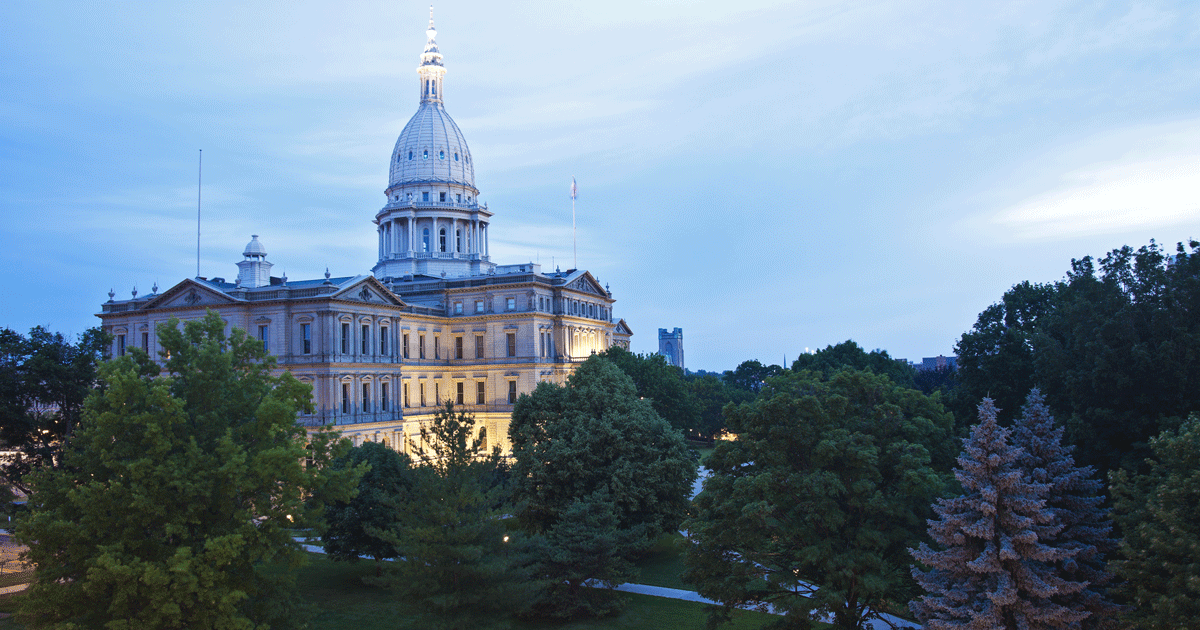When called upon to write about Michigan policymakers’ approach to growing the state’s economy, it’s hard to not lapse into using clichés. Some that come to mind are:
- “The definition of insanity is doing the same thing over and over again and expecting a different result.”
- “Fool me once, shame on you. Fool me twice, shame on me.”
- Or more colloquially, “They don’t believe fat meat is greasy.”
Despite the dismal failure that is post-tax cut Kansas, some Michigan lawmakers are committed to mimicking that state’s steadfast fidelity to tax cuts as the one and only path to prosperity. It seems a bizarre choice given the undeniably sluggish Kansas economic indicators that were outlined in a recent blog by my colleague Lou Glazer. Instead of the exponential economic growth that Kansas Gov. Sam Brownback promised that the tax cuts the state adopted when he took office in 2011 would create, the state has had to cut funding for schools and critical public services and drain money from its rainy day fund for the privilege of experiencing slower private job growth and lower private industry wages than surrounding states. No economist in his or her right mind would call that a success.
Meanwhile, some Michigan lawmakers want to take a page out of Kansas’ tattered book with a tax cut that would completely eliminate the state’s income tax, which currently funds 69% of Michigan’s general fund budget and 22% of the state’s school aid fund. It’s not as if Michigan lawmakers haven’t tried to use tax cuts to leverage growth before. Some would say that when it comes to poorly-conceived tax cuts, Michigan was Kansas before Kansas was Kansas.
Since 2000, Michigan’s effective tax rate has dropped 25 percent. This number is music to the ears of some supply siders, but their songbook is full of off-key notes. For example, despite the fact that the state’s auto industry is now firing on all engines, Michigan ranks 33rd in per capita income, down from 18th place in 2000. And while Michigan’s unemployment rate is much lower than the double digit statistics of the Great Recession, it is still higher than the national average.
While some politicians have promised that tax cuts would jump start jobs in Kansas and Michigan, neither workers nor businesses are flocking to either state. Why? Turns out people actually enjoy things like quality K-12 schools, smooth roads and affordable public universities. Few would deny that all of these quality of life indicators have declined as Michigan policymakers’ tax cut obsession has increased.
Education Week’s 2016 Quality Counts state report card gives Michigan a “D” score for K-12 educational attainment. College tuition in Michigan, once significantly subsidized by a state government that recognized the public good of having an educated work force, is now shouldered overwhelmingly by Michigan families, as detailed by my colleague Patrick Cooney in a recent blog . In 1985, Michigan public universities received about 60 percent of their operating budgets from state appropriations. Today, the state provides about 20 percent of funding for public universities, with about 70 percent coming from student tuition. And if I have to convince you that Michigan’s roads are terrible, you clearly haven’t been around here very long.
While Kansas has offered us a compelling example of how not to stimulate an economy, states like California and Minnesota have invested more public dollars into strategic priorities and have enjoyed robust economic growth. It’s simple, states who invest in public goods like boosting educational outcomes and creating cities that are magnets for talented people have stronger workforces, higher per capita income and a better quality of life. Those that don’t, well, don’t. It reminds me of another cliché: “You get what you pay for.”







